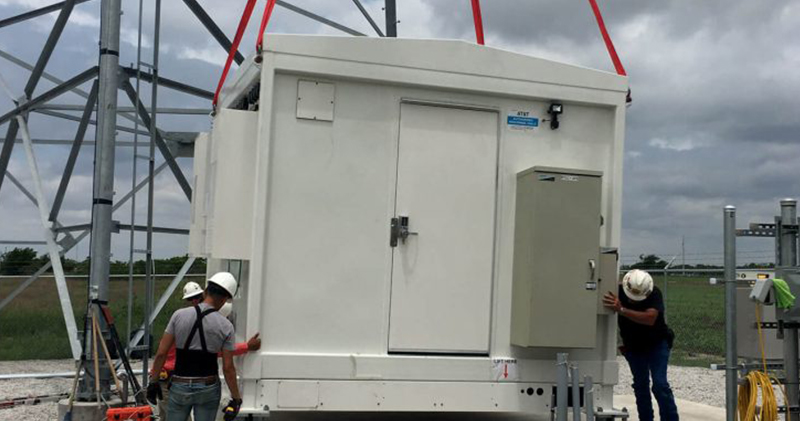Prefab Cabinets Push the Boundaries of Both Rural and Traditional Networks
By Greg Worthman
As service providers push advanced broadband capabilities further into the backroads of America, there is a need to house equipment closer to these new rural subscribers. Additionally, the lower latency and faster data speeds necessary for advanced services such as autonomous vehicles require that hubs be closer to the network’s edge. These facts and others drive the need for hub facilities to be placed in new locations.
Brick-and-mortar hubs are the traditional approach when opening new areas to broadband services. These structures are built in much the same way as any other commercial building—permit, design, site preparation, foundation, construction, equipment placement, connection, turn-up, and finally service provision. Depending on the locale, this process can take months if not a year or more.
A practical alternative is a prefabricated cabinet enclosure that can be built to specification remotely, trucked to the job site, and dropped in place. Perhaps the best way to think of such a structure is as a walk-in cabinet (WIC). This approach offers key advantages over the stick-built alternative:
Rapid deployment
Perhaps the greatest advantage of a prefab WIC is that it can significantly reduce the amount of time needed to build new infrastructure. The complete structure is delivered on-site pre-assembled and ready to install using one of a variety of foundational methods. The WIC is designed to meet state and federal highway standards to avoid costly permitting and transport assistance.
Controlled build
Because these cabinets are built in a “factory” environment, they can be completed in less time with a high level of quality. Brick-and-mortar builds are at the mercy of the weather, availability of trades such as carpenters and electricians, municipal regulations, and other uncontrollable circumstances.
Structural integrity
A large cabinet provides ample room to protect the equipment housed within it, as well as to shelter technicians who maintain this key part of the network. A good-quality structure will be made of 12-gauge steel with high-quality welds, while the enclosure itself should have a powder-coated finish to withstand the elements and provide superior environmental protection. These structures are designed to withstand extremely high wind, snow and ice loads. Other features include fire suppression systems and meeting NFPA 2-hour fire ratings.
Energy performance
A major part of the ongoing costs of any solution is how well equipment can be kept at proper operating temperature. Thermal management needs will vary greatly based on such factors as geography and seasonality. Therefore, it is important to look to cabinet solutions that emphasize good thermal management under even the most demanding heat dissipation scenarios. Modularity and flexibility of thermal solutions will allow engineers to select equipment that can help reduce generator size requirements. Finally, adequate insulation in the range of R13 helps to ensure efficient thermal performance. Designed properly, a WIC can offer significantly lower annual energy costs.
Flexibility/modularity
A WIC allows a service provider to design those features that will promote a high level of network performance at minimal cost. Cable entry from all sides—top, bottom, and rear—maximize flexibility, while accommodations for the placement of equipment racks, cable ladders, convenience outlets, fiber raceways, and interior/exterior lighting, should be flexible enough to comport with operating company standard practices. Finally, maintaining the security and operational integrity of the WIC can be assured through alarms such as door intrusion alerts, high temperature, thermal system failure, and more.
As large and small broadband providers expand into rural and other new service areas, prefab walk-in cabinets are providing a valuable tool in the deployment of fiber optic and other broadband equipment more than ever before.
 Greg Worthman,
Greg Worthman,
Amphenol Broadband Solutions
Greg Worthman is Amphenol Broadband Solutions’ Product Management Director for RF components designed for the local area network in the home, and OSP enclosures for network transport equipment. He attended the University of Minnesota and has over 45 years in the cable industry.




